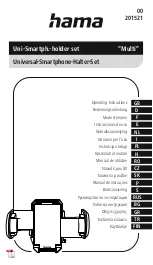
K850
1203-2528 rev. 1
APPENDIX
A
P
P
E
NDIX
System Requirements
Note: Before start using the Troubleshooting Software, the phone must be flashed with ITP SW.
The system requirements for running the application are:
- At least a Pentium III 500 MHz, with 128 MB of RAM
- Win2000 or Win XP
- One free USB connector
- USB Computer Cable
- At least 1024x768 display resolution. (1152x864 is recommended.)
- SEPI Drivers must be installed
- SEPI BOX
- SEPI A1 Cable
- Phone Specific Dummy Battery
- Phone Specific TRS Fixture
- CST-75 Charger cable
- One Dual or Two Single Channel Power Supplies
TX and RX - Tab
Communication Functions
Note: Some parts of the Communications functions may not be implemented since they are not
supported by ITP Software.
Note: There are some differences in the user interface depending on the phone project file loaded.
Some functions may not be available on all products.
GSM
GSM Mode Settings
Used for selecting of the GSM radio mode. The following Radio Modes are available:
-
TX and RX Switched
-
TX and RX Static
Note: In the TX Switched mode all parameters are available (Band, Channel and Power Level). In the
TX Static mode the control of Power Level is hidden and the transmitter works with a predefined DAC
value. This is done to protect the power amplifier against overheating.
GSM Radio Settings
Used for Channel and Power Level control of the selected GSM Band. The TX and RX frequency value
for selected band and channel will be presented in the TX and RX frequency box.
1. Select the desired GSM band. Available options are
GSM 850
(Ch 128…251),
GSM 900
(Ch
1...124),
EGSM 900
(Ch 975…1023),
DCS 1800
(Ch 512…885) and
PCS 1900
(Ch 512…810).
2. Use default value or select desired channel.
3. Use default value or select desired power level.
Note: Any GSM band not used by the Mobile Phone will be unavailable in the GSM Radio Settings.
GSM RSSI measurements
This measurement is only possible to perform when RX Switched mode is selected. Use the Mobile
Phone Tester instrument for feeding a signal to the mobile phone’s receiver. For Instrument and
Phone’s settings go to Troubleshooting Manual – GSM Network problems.
1.
Select RX Switched Mode.
2.
Select desired GSM band and Channel.
3.
Go to GSM RSSI Measurements and Start RSSI Test.
Note: The RSSI Test can be performed differently from product to product due to the limited ITP
Software support.
WCDMA
Note: Unused WCDMA Bands will not be available in the WCDMA Radio Settings.
Note: For some products the TX and RX WCDMA Channels range can be reduced due to the limited
product functionality or Test Instrument limitation. This is done to avoid wrong and incorrect
measurement results.
Radio Settings
Used for TX and RX Channels control of the selected WCDMA Band. The TX and RX Channels frequency
for selected band will be presented in the TX and RX frequency box.
1. Select the desired WCDMA band. Available options are
Band I
(TX Ch 9612…9888, RX Ch
10562…10838),
BAND II
(TX Ch 9262…9538, RX Ch 9662…9938),
BAND IV
(TX Ch 1312…1513, RX
Ch 1537…1738),
BAND V
(TX Ch 4132…4233, RX Ch 4357…4458) and
BAND VIII
(TX Ch
2712…2863, RX Ch 2937…3088)
2. Use default value or select desired TX or RX channel.
Troubleshooting Software Documentation
SEMC Troubleshooting Manual
95
(101)







































